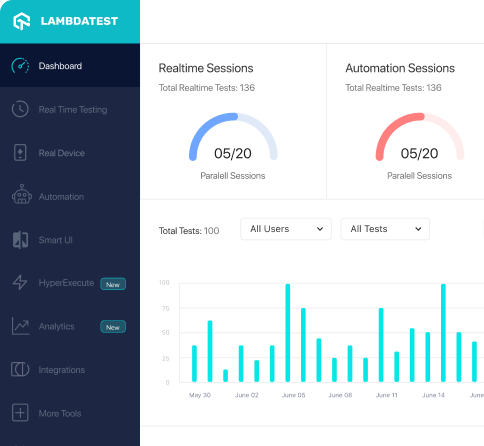How to use ShouldContainKey class of org.assertj.core.error package
Best Assertj code snippet using org.assertj.core.error.ShouldContainKey
Source:ShouldContainKey_create_Test.java
...13package org.assertj.core.error;14import static java.lang.String.format;15import static org.assertj.core.api.Assertions.assertThat;16import static org.assertj.core.data.MapEntry.entry;17import static org.assertj.core.error.ShouldContainKey.shouldContainKey;18import static org.assertj.core.test.Maps.mapOf;19import java.util.Map;20import org.assertj.core.api.TestCondition;21import org.assertj.core.description.Description;22import org.assertj.core.description.TextDescription;23import org.assertj.core.presentation.StandardRepresentation;24import org.junit.Test;25/**26 * Tests for <code>{@link ShouldContainKey#create(Description)}</code>.27 */28public class ShouldContainKey_create_Test {29 @Test30 public void should_create_error_message_with_key_condition() {31 Map<?, ?> map = mapOf(entry("name", "Yoda"), entry("color", "green"));32 ErrorMessageFactory factory = shouldContainKey(map, new TestCondition<>("test condition"));33 String message = factory.create(new TextDescription("Test"), new StandardRepresentation());34 assertThat(message).isEqualTo(format("[Test] %n" +35 "Expecting:%n" +36 " <{\"color\"=\"green\", \"name\"=\"Yoda\"}>%n" +37 "to contain a key satisfying:%n" +38 " <test condition>"));39 }40}...ShouldContainKey
Using AI Code Generation
1import static org.assertj.core.api.Assertions.assertThat;2import static org.assertj.core.api.Assertions.catchThrowable;3import static org.assertj.core.error.ShouldContainKey.shouldContainKey;4import static org.assertj.core.util.FailureMessages.actualIsNull;5import java.util.HashMap;6import java.util.Map;7import org.assertj.core.description.Description;8import org.assertj.core.internal.Maps;9import org.assertj.core.presentation.StandardRepresentation;10import org.junit.Test;11public class ShouldContainKey_create_Test {12 private Maps maps = Maps.instance();13 private Description description = new TestDescription("TEST");14 public void should_create_error_message_for_missing_key() {15 Map<String, String> map = new HashMap<>();16 map.put("name", "Yoda");17 Throwable error = catchThrowable(() -> maps.assertContainsKey(description, map, "color"));18 assertThat(error).isInstanceOf(AssertionError.class);19 assertThat(error.getMessage()).isEqualTo(String.format("[TEST] %n" + 20 " <{\"name\"=\"Yoda\"}>%n" + 21 " <\"color\">"));22 }23 public void should_create_error_message_for_null_key() {24 Map<String, String> map = new HashMap<>();25 map.put("name", "Yoda");26 Throwable error = catchThrowable(() -> maps.assertContainsKey(description, map, null));27 assertThat(error).isInstanceOf(AssertionError.class);28 assertThat(error.getMessage()).isEqualTo(String.format("[TEST] %n" + 29 " <{\"name\"=\"Yoda\"}>%n" + 30 " <null>"));31 }32 public void should_create_error_message_for_null_actual() {33 Throwable error = catchThrowable(() -> maps.assertContainsKey(description, null, "color"));34 assertThat(error).isInstanceOf(AssertionError.class);35 assertThat(error.getMessage()).isEqualTo(actualIsNull());36 }37 private static class TestDescription extends Description {38 private final String value;39 private TestDescription(String value) {40 this.value = value;41 }42 public String value() {43 return value;44 }45 }46}47package org.assertj.core.error;48import static org.assertj.core.error.ShouldContainKey.shouldContainKey;49import orgShouldContainKey
Using AI Code Generation
1import org.assertj.core.error.ShouldContainKey2import org.assertj.core.api.Assertions.shouldContainKey3import org.assertj.core.api.MapAssert.shouldContainKey4import org.assertj.core.api.MapAssertBase.shouldContainKey5import org.assertj.core.api.AbstractMapAssert.shouldContainKey6package org.assertj.core.api;7import org.assertj.core.error.ShouldContainKey;8import org.assertj.core.internal.Maps;9import java.util.Map;10import static org.assertj.core.error.ShouldContainKey.shouldContainKey;11import static org.assertj.core.util.Preconditions.checkNotNull;12public class MapAssert<K, V> extends AbstractMapAssert<MapAssert<K, V>, Map<K, V>, K, V> {13 public MapAssert(Map<K, V> actual) {14 super(actual, MapAssert.class);15 }16 * <pre><code class='java'> Map<String, String> map = new HashMap<>();17 * map.put("key1", "value1");18 * map.put("key2", "value2");19 * assertThat(map).containsKey("key1");20 * assertThat(map).containsKey("key2");21 * assertThat(map).containsKey("key3");</code></pre>22 public MapAssert<K, V> containsKey(K key) {23 maps.assertContainsKey(info, actual, key);24 return myself;25 }ShouldContainKey
Using AI Code Generation
1public class MapAssertionTest {2 public void testMapAssertion() {3 Map<String, String> map = new HashMap<>();4 map.put("1", "One");5 map.put("2", "Two");6 map.put("3", "Three");7 Assertions.assertThat(map).containsKey("1").containsValue("One");8 }9}Automation Testing Tutorials
Learn to execute automation testing from scratch with LambdaTest Learning Hub. Right from setting up the prerequisites to run your first automation test, to following best practices and diving deeper into advanced test scenarios. LambdaTest Learning Hubs compile a list of step-by-step guides to help you be proficient with different test automation frameworks i.e. Selenium, Cypress, TestNG etc.
LambdaTest Learning Hubs:
- JUnit Tutorial
- TestNG Tutorial
- Webdriver Tutorial
- WebDriverIO Tutorial
- Protractor Tutorial
- Selenium 4 Tutorial
- Jenkins Tutorial
- NUnit Tutorial
- Jest Tutorial
- Playwright Tutorial
- Cypress Tutorial
- PyTest Tutorial
YouTube
You could also refer to video tutorials over LambdaTest YouTube channel to get step by step demonstration from industry experts.
Most used methods in ShouldContainKey
Try LambdaTest Now !!
Get 100 minutes of automation test minutes FREE!!


